Today’s destination was brought to you by the good folks who practice a religion rather different from our Western world of Christianity. Jogyesa temple is located near the very center of downtown Seoul, and unlike many Buddhist temples / shrines – usually located in remote mountainous range or impossibly steep climbs – this one is a few hundred meters from three different subway stations.
Jogyesa temple is considered a representative temple of Korean Buddhism, as well as the head temple of the Jogye Order of Korean Buddhism. In other words, this ain’t your daddy’s church – this is Buddhist HQ. Buddha’s Birthday (traditionally the eighth day of the fourth month on the lunar calendar) fell on 12 April 2008, and is considered a legal holiday in Korea, much like Independence Day or Christmas is in America.
In other words, I managed to pick the busiest day to see a temple, combined with the busiest temple in the area. This equation results in some almost impassable streets:
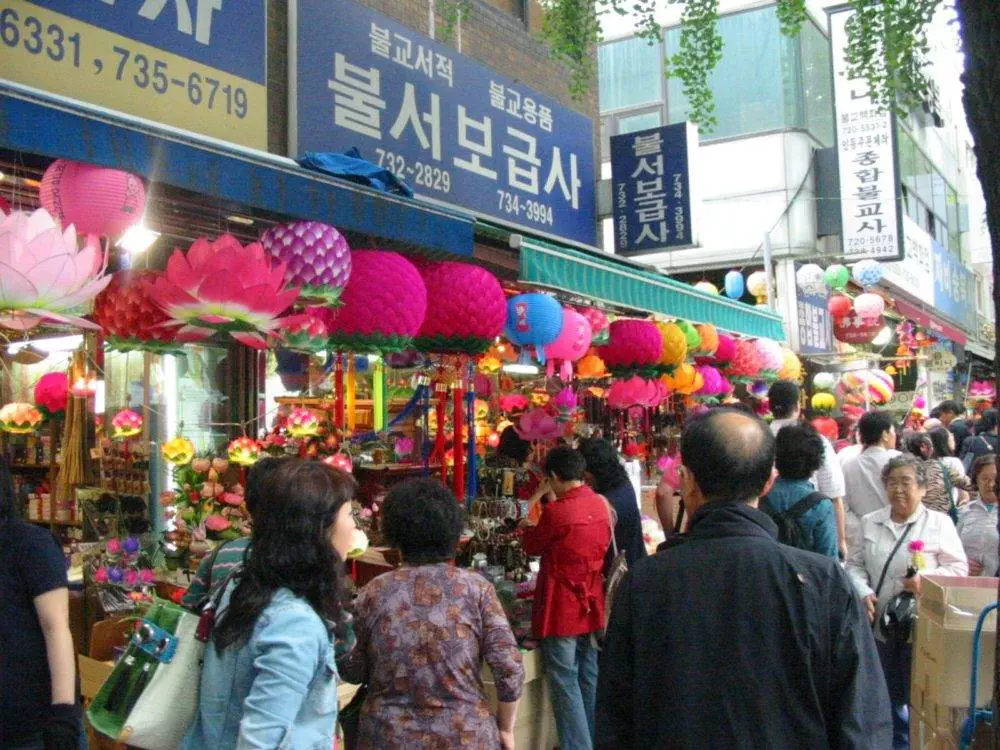
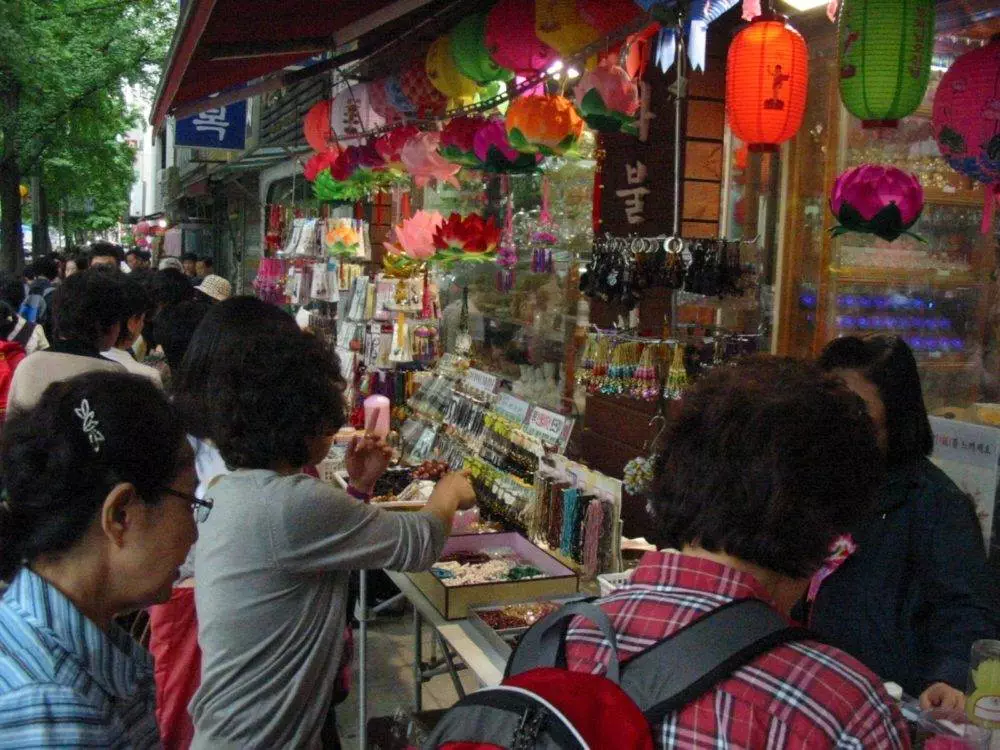
A number of items were available along the way – more than the usual food and drink available when the crowds are out. Yurmju (better known as Buddhist prayer beads) were commonly available in many different styles and colors; candles, incense, colorful paper lanterns, and little Buddhas were also frequently available.
After arriving at the temple (who knew walking 400 meters would take almost half an hour?), I was awarded with a wonderful view:
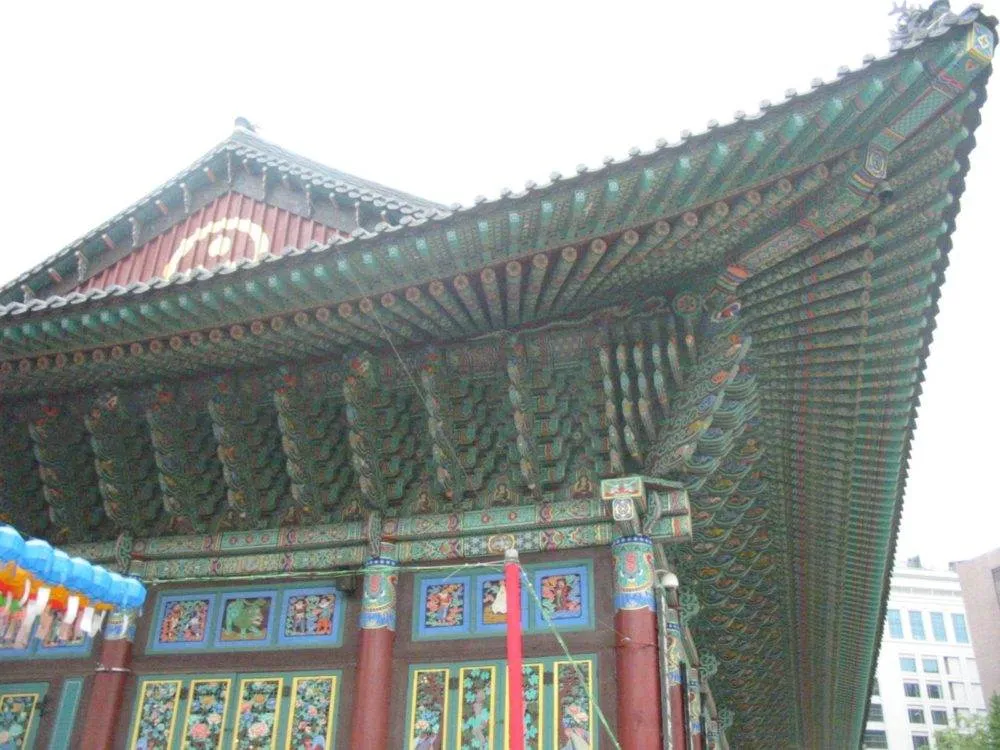
(Jogyesa temple, 12 May 2008)
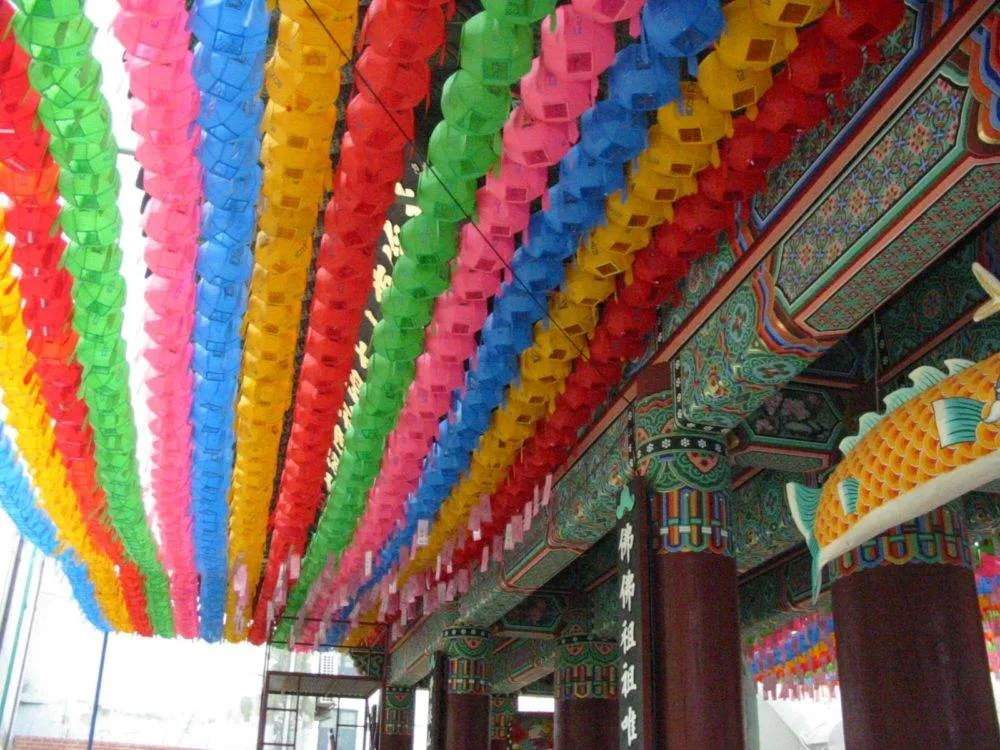
Just a sampling of the THOUSANDS of colored lanterns around the temple (Jogyesa temple, 12 May 2008).
As I began to take in the sights and sounds, I began to notice a continuously moving stream of people snaking their way into the temple. This stream was managed courtesy of the Tensabarriers you find making the ‘short’ line a lot longer at an amusement park. While waiting / moving, I took a quick survey of the people – the vast majority were Korean (duh), but enough foreigners were sprinkled around that it was hard to not see one somewhere around you.
In any case, the line moved quickly, and within 10 minutes I began to feel a little… nervous… I know almost nothing about Buddhism, and here I am about to encounter it head-on for the first time. Just before getting to the side door, I was handed a white plastic bag – the kind Walmart is so keen on giving out – which ended up being for my shoes. This is where watching the crowd pays off in droves. Slip off your shoes, place them into the bag, then walk along the wooden rack into the temple:
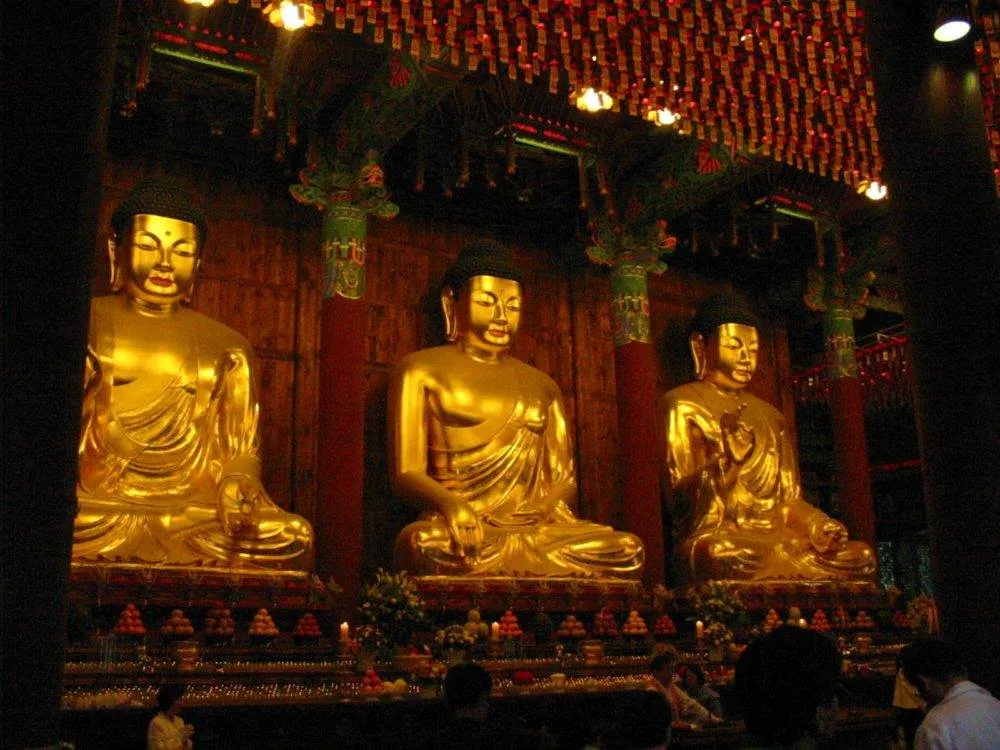
(Out of respect for the temple and followers I used no flash inside the temple – apologies if the pictures look a little dark). The three Buddhas (from left to right) are Amitabha Buddha, Shakyamuni Buddha, and Bhaisaiya Buddha (Medicine Buddha) (Jogyesa temple, 12 May 2008).
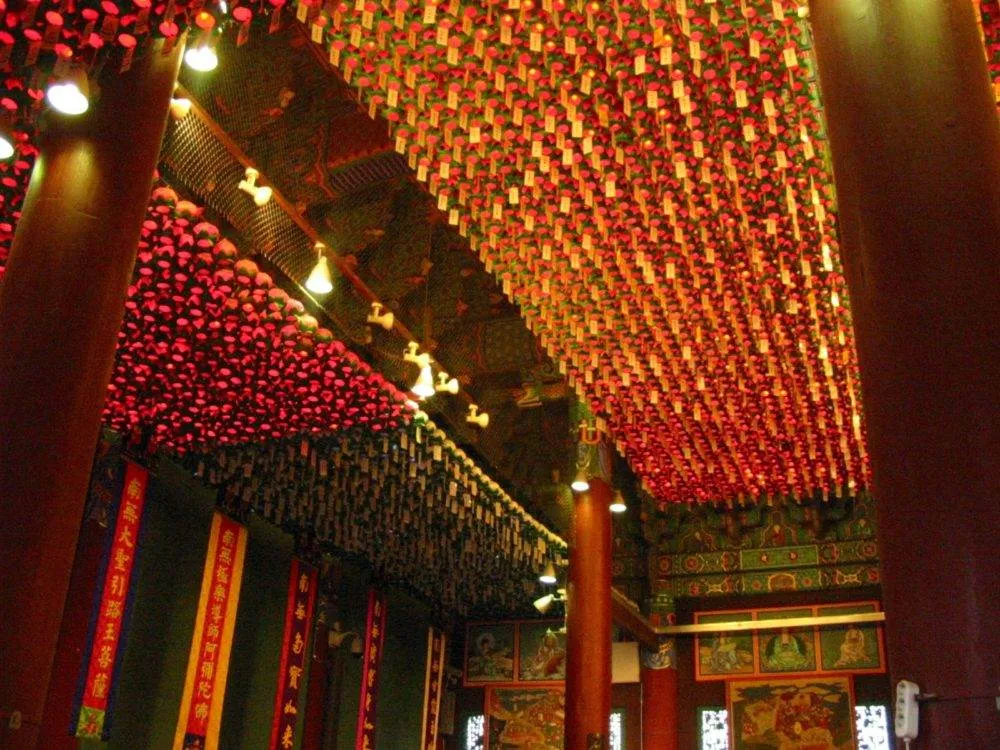
Even the ceiling is decorated with lights and tags, similar to those hanging from the paper lanterns outside (Jogyesa temple, 12 May 2008).
While inside the temple, I couldn’t help but notice that people seemed to fall into two distinct but minority groups. The first group was sightseers / tourists, complete with flash cameras and almost zero respect for the sacred ground on which they stood. The second group was the reverent, who seemed oblivious to the aforementioned flash photography and sightseers. They bowed or got on hands and knees in front of these statues, which I later learned is done from a faithful mind. It’s not done to worship Buddha as a deity, but to lower yourself completely. I wondered how hard it was to filter out those outside influences – including the Westernized uptempo music on the other side of the wall!
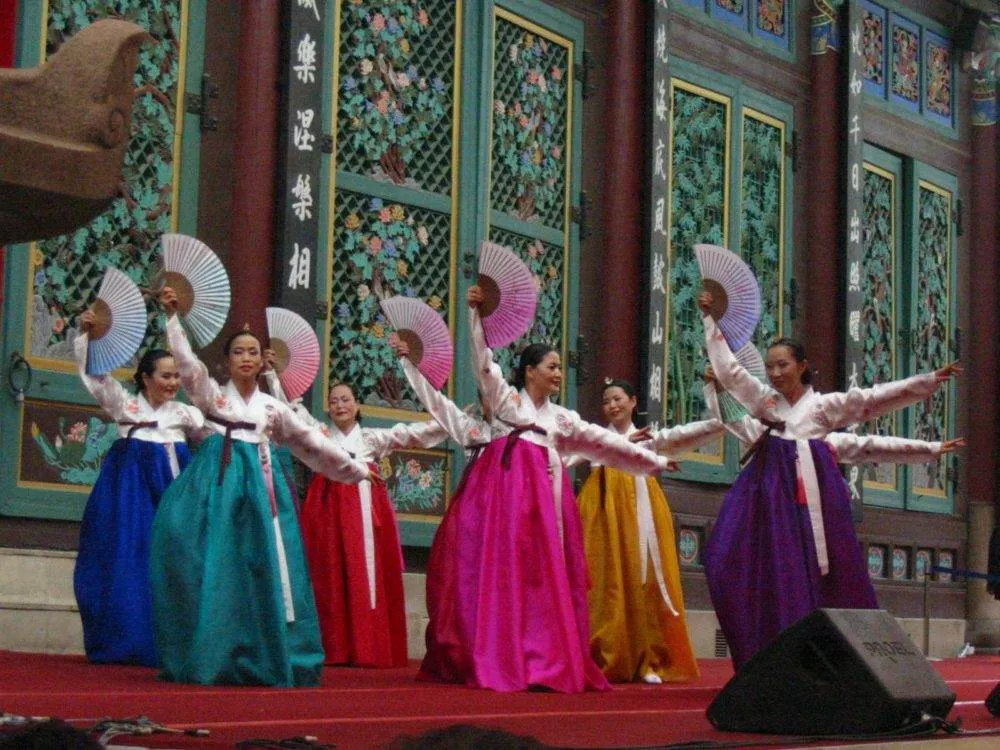
A group of Korean ladies, dressed in colorful hanbok and dancing a traditional Korean dance. The dancing was beautiful, but the music to my American ears sounded like a violin placed in a blender while various jungle animals screeched in the background. Consider yourself warned! (Jogyesa temple, 12 May 2008).
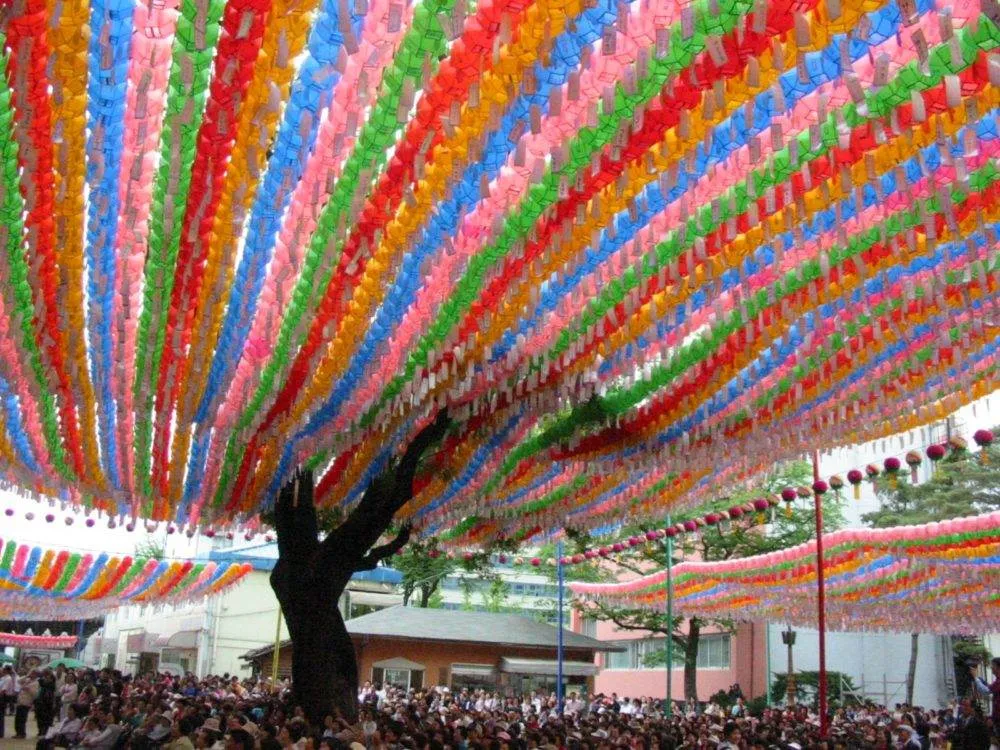
A look out at the crowd – notice how the THOUSANDS of colored lanterns make an artificial roof over the stage and crowd (Jogyesa temple, 12 May 2008).
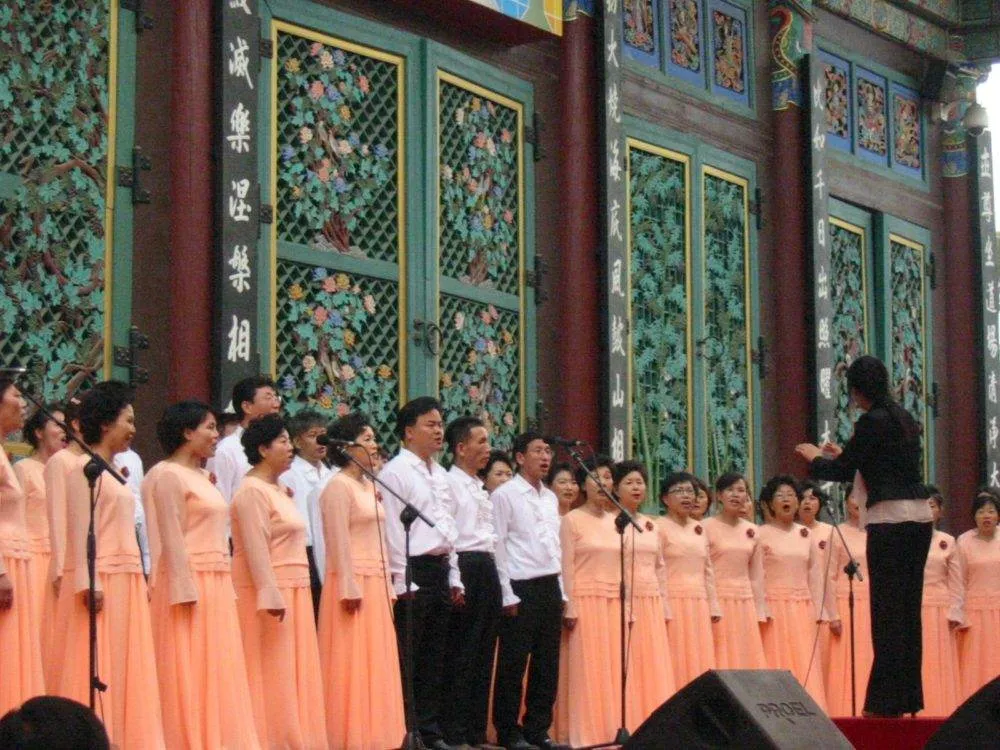
A Korean choir sang a couple of songs in Korean. They sounded good, although the guys were seriously outpowered by the ladies (kind of typical for most choirs!) (Jogyesa temple, 12 May 2008). If you were ever in a choir, compare your dress to the apricot-colored ones above!
One of the signs (not pictured) indicated the date, with the year given as 2552 (Buddhist Era) as well as 2008 (Common Era or Anno Domini, take your pick). After the performance ended, people began to scatter towards other areas. One of the longer lines was to assist in ringing the Brahma Bell:
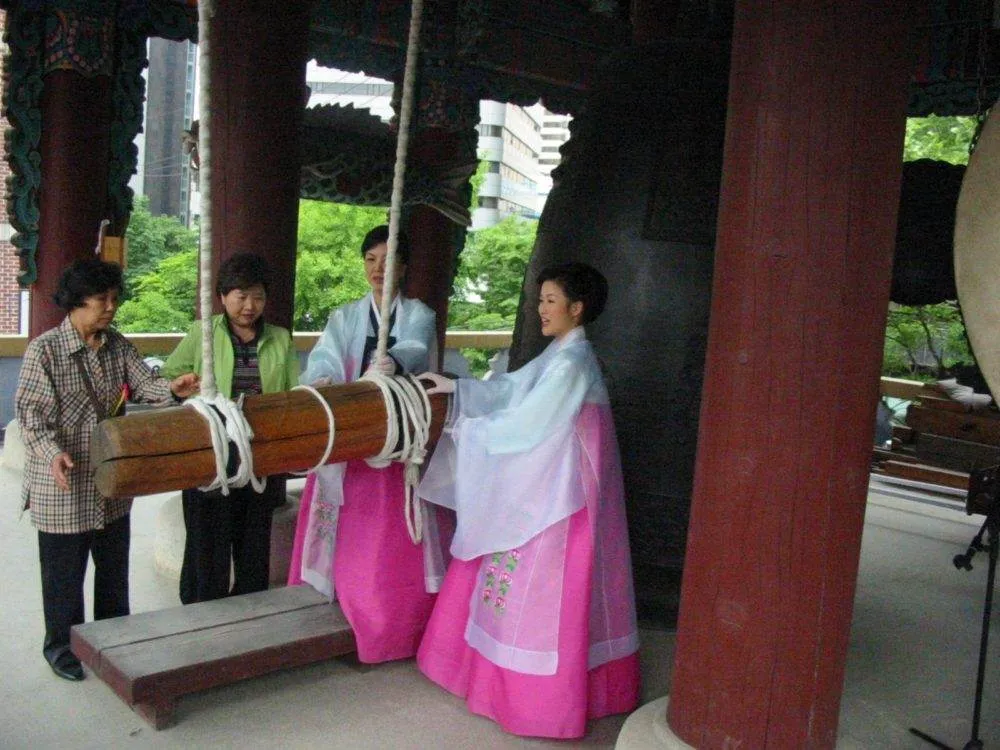
Typically, this bell is struck 28 times every morning at 4am (when the Buddhist monk day starts), while every evening at 6pm the bell is struck 33 times by designated monks. Today, the bell could be struck by anyone willing grab the rope handles and help swing the log. After walking up the stairs to the Brahma Bell Pavilion, you’ll go 4 at a time, grab a handle, and pull back without needing much force. Even after the initial ring, the bell continued to reverberate at a level you could almost feel. I wonder if those designated monks still feel that after so many rings… (Brahma Bell Pavilion, Jogyesa temple, 12 May 2008)
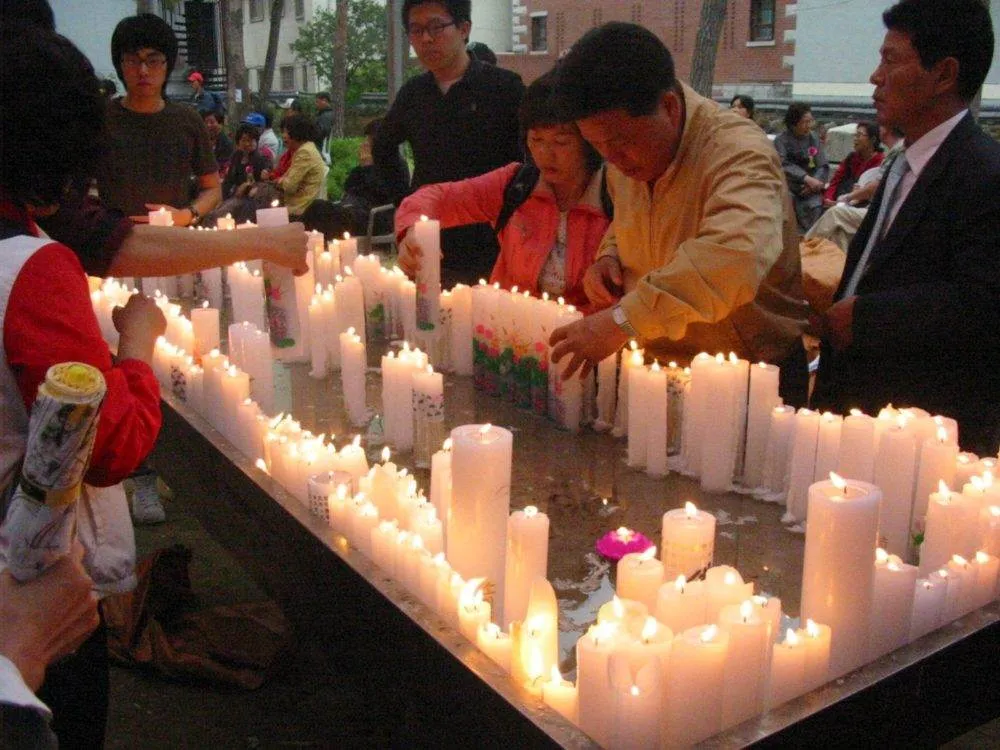
After admiring the sights and sounds, I continued walking around in a rough circle towards the entrance of the temple’s grounds. My next stop was a couple of large vessels holding water and dozens of lit candles, placed by the reverent. Some lit an incense stick from the candle, then carried it towards a sand pit to allow the incense to burn, and bowed towards the pagoda (next picture):
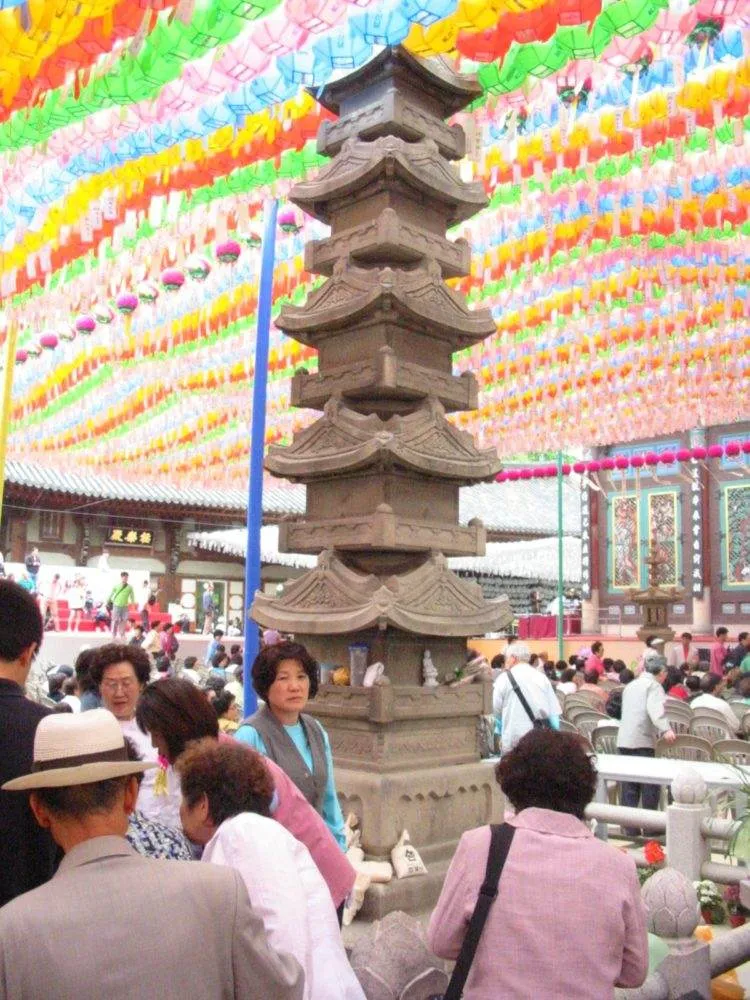
According to a nearby signpost, this pagoda is seven stories tall, and allegedly contains a sarina of Shakyamuni’s (a sacred relic of the Buddha, similiar to a relic you might find at a Catholic church). It was given to the Korean Buddhist community in 1913, and the sarina was enshrined here in 1930. (Jogyesa temple, 12 May 2008).
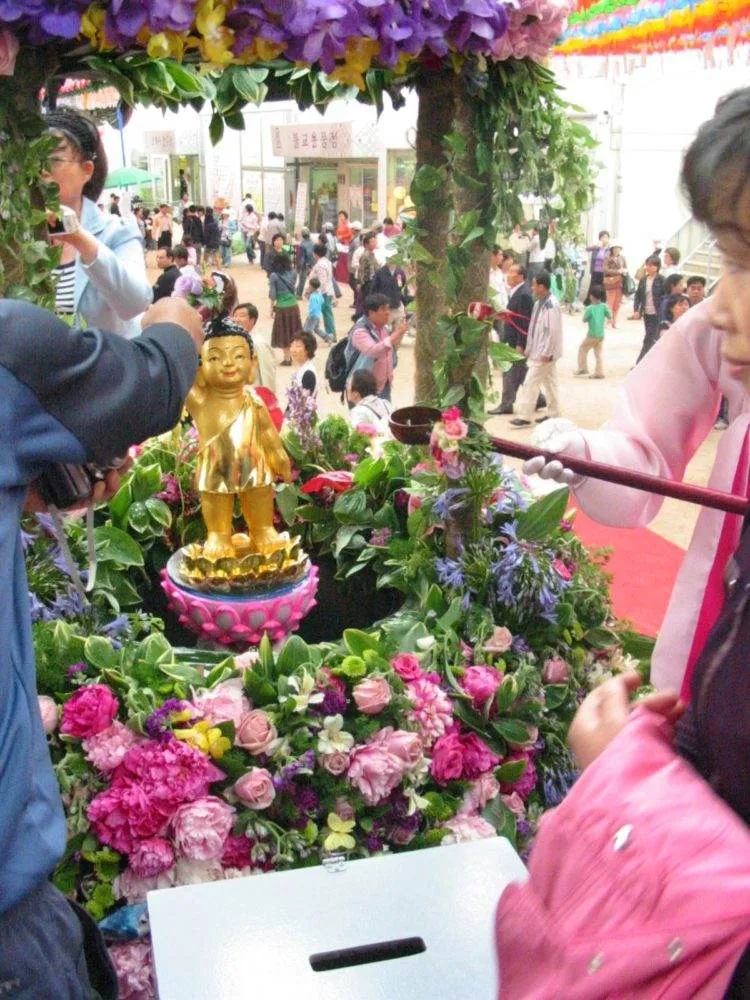
A number of people were lined up to pour water on a golden baby Buddha, surrounded by a fine array of fresh flowers. At every place or stop, a donation box implies donations were accepted but never required or forced. (Jogyesa temple, 12 May 2008)
Several shops were open on the temple’s grounds to buy candles, incense, prayer beads – and Pepsi. Yes, even here at a Buddhist temple your favorite carbonated beverage is never too far away…
In the end, I noticed two distinct groups amidst the masses: the sightseers, whose only instinct seemed to be taking flash pictures (this is NOT an indictment of Americans / foreigners – Koreans were occasionally just as guilty!), while the reverent, who thankfully seemed oblivious to those who weren’t. Even without entirely knowing what was going on or knowing the significance behind each act, it was a beautiful day and a wonderful experience.



Love the photos of the beautiful temple. Thank you for being respectful of other’s beliefs. Amazingly similar to the temple near Los Angeles.